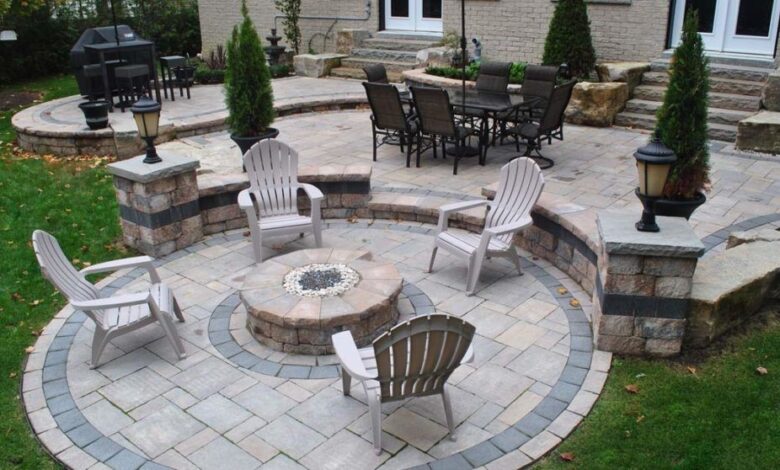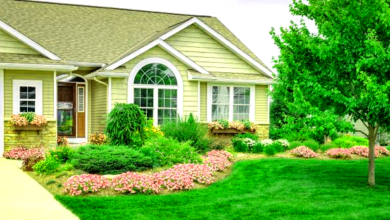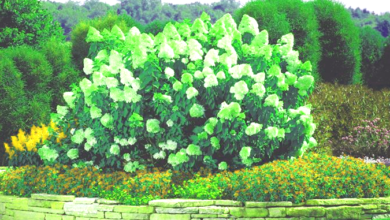12 Ideas of Creating a Low Maintenance Garden for Busy Homeowners

In today’s fast-paced world, many homeowners find themselves leading busy lives with limited time to dedicate to gardening and yard maintenance. By implementing some smart strategies and ideas of Creating a Low Maintenance Garden in making thoughtful choices, it is possible to create a low maintenance garden that requires minimal effort and still looks stunning. In this article, we will explore the various aspects of creating a low maintenance garden for busy homeowners.
In this fast-paced world, maintaining a garden can be a challenge for busy homeowners. However, with the right approach and strategic planning, it is possible to create a low maintenance garden that offers beauty and tranquility without demanding excessive time and effort.
Read More..https://houzzwire.com/nautical-vibes10-coastal-home-decor-ideas/
Assessing Your Space
Before embarking on your low maintenance garden journey, it’s important to assess your outdoor space. Take note of the available sunlight, soil type, and existing vegetation. This information will help you make informed decisions about plant selection and design choices.
Opting for Perennial Plants
In Creating a Low Maintenance Garden, One of the key aspects of a low maintenance garden is choosing the right plants. Opt for perennial plants that require less care and attention compared to annuals. Perennials come back year after year and often require minimal pruning and fertilizing, allowing you to enjoy a beautiful garden with less effort.
Incorporating Hardscaping Elements
Integrating hardscaping elements, such as pathways, patios, or decks, can significantly reduce the amount of time needed for garden upkeep. Hardscaping not only adds visual interest but also provides functional spaces that require less maintenance than traditional gardens.
Mulching and Weed Control
Mulching is a fantastic way to suppress weeds and conserve moisture in your garden. Apply a layer of organic mulch, such as wood chips or straw, around your plants. This will not only inhibit weed growth but also help retain moisture in the soil, reducing the need for frequent watering.
Efficient Irrigation System

Installing an efficient irrigation system, such as drip irrigation, can save you time and water. Drip irrigation delivers water directly to the plant’s roots, minimizing water waste and reducing the need for manual watering. Consider incorporating a timer or smart controller to automate the watering process.
Simplifying the Design
In Creating a Low Maintenance Garden, A simple and streamlined garden design can greatly reduce the maintenance required. Avoid overly complex layouts and opt for clean lines and minimalistic features. This will not only create a visually appealing space but also make it easier to maintain and manage.
Choosing Low Maintenance Features
When selecting garden features, choose those that require minimal upkeep. For example, opt for low maintenance outdoor furniture made from weather-resistant materials, such as aluminum or synthetic wicker. Similarly, choose easy-to-clean and durable materials for pathways, such as gravel or pavers.
Implementing Smart Planting Techniques
Strategic planting techniques can significantly reduce maintenance requirements. Group plants with similar water and sunlight needs together, creating efficient watering zones. This way, you can avoid overwatering or underwatering certain plants. In Creating a Low Maintenance Garden , consider using raised beds or containers for easier access and better control over soil conditions.
Proper Soil Preparation
Preparing the soil properly is essential for a low maintenance garden. Before planting, ensure the soil is well-drained and enriched with organic matter. This will promote healthy plant growth and reduce the need for excessive fertilization. Conduct a soil test to determine its pH level and nutrient content, and make amendments accordingly.
Regular Maintenance Tips
While the goal is to create a low maintenance garden, some level of upkeep is still necessary. Perform routine tasks such as weeding, deadheading flowers, and pruning as needed. Regularly inspect your plants for signs of pests or diseases and take appropriate measures promptly. By addressing issues early on, you can prevent them from escalating and causing more significant problems.
Creating a Relaxation Area
A low maintenance garden can also serve as a retreat for relaxation and rejuvenation. Designate a specific area for seating or lounging where you can unwind and enjoy your garden. Incorporate comfortable outdoor furniture, add some shade with umbrellas or pergolas, and surround yourself with your favorite plants and scents.
Embracing Natural Pest Control
Instead of relying on chemical pesticides, embrace natural pest control methods. Introduce beneficial insects like ladybugs or lacewings that feed on garden pests. Plant companion flowers and herbs that repel pests naturally, such as marigolds or basil. By maintaining a balanced ecosystem, you can minimize pest damage without resorting to harsh chemicals.
Attracting Beneficial Wildlife
Invite beneficial wildlife into your garden to help with pest control and pollination. Install bird feeders, birdhouses, or bat boxes to attract insect-eating birds and bats. Create a water source, such as a birdbath or small pond, to attract frogs, dragonflies, and other beneficial creatures. These natural allies will assist in maintaining the ecological balance of your garden.
Conclusion: Creating a Low Maintenance Garden
In conclusion, creating a low maintenance garden for busy homeowners is a realistic goal that can be achieved through careful planning, smart plant choices, and strategic design. By implementing the suggested techniques and embracing low maintenance features, you can enjoy a beautiful and relaxing outdoor space without sacrificing your precious time. Remember to adapt the suggestions to your specific needs and preferences, and don’t forget to incorporate sustainable practices and attract beneficial wildlife. With a low maintenance garden, you can find solace and enjoyment in nature even amidst your busy schedule.
Creating a low maintenance garden for busy homeowners is entirely achievable with careful planning and thoughtful choices. By selecting the right plants, incorporating hardscaping elements, implementing smart planting techniques, and embracing low maintenance features, you can enjoy a beautiful outdoor space with minimal effort.
In Creating a Low Maintenance Garden, Remember to regularly maintain your garden, create a relaxation area, and promote natural pest control and beneficial wildlife. With these strategies in place, your low maintenance garden will provide a serene retreat amidst your busy lifestyle.
FAQs: Creating a Low Maintenance Garden
Q. Can I have a low maintenance garden if I have limited space?
A .Absolutely! Even with limited space, you can create a low maintenance garden by utilizing vertical gardening techniques, incorporating container plants, and optimizing the available space efficiently.
Q. How often should I water my low maintenance garden?
A .The frequency of watering will depend on various factors, such as plant requirements, weather conditions, and soil type. It’s best to monitor the moisture level of the soil and water when needed rather than sticking to a strict schedule.
Q . Can I still grow vegetables in a low maintenance garden?
A .Yes, you can grow vegetables in a low maintenance garden. Opt for low maintenance vegetable varieties and practice efficient watering techniques, mulching, and pest control methods.
Q . How can I reduce weed growth in my low maintenance garden?
A .To reduce weed growth, apply a layer of mulch, pull out weeds as soon as you spot them, and regularly maintain the garden by removing any unwanted plants. Consider using landscape fabric or weed barriers in areas where weeds tend to be persistent.
Q . Can I incorporate sustainable practices in my low maintenance garden?
A .Absolutely! You can make your low maintenance garden eco-friendly by practicing sustainable gardening techniques. Use organic fertilizers, conserve water with efficient irrigation systems, and promote biodiversity by planting native species and providing habitats for wildlife.
Q . Can I have a low maintenance garden without sacrificing aesthetics?
A .Certainly! With careful planning and design, you can create a low maintenance garden that is visually appealing. Focus on selecting plants with attractive foliage, incorporating elements such as water features or sculptures, and creating focal points to enhance the overall aesthetics of your garden.
Q . Can I hire a professional landscaper to help me create a low maintenance garden?
A .Yes, hiring a professional landscaper can be a great option if you need assistance in designing and implementing your low maintenance garden. They can provide expert advice, recommend suitable plant varieties, and help create a tailored garden that fits your preferences and lifestyle.
Q . Can I incorporate edible plants into a low maintenance garden?
A .Certainly! Many edible plants, such as herbs and certain fruits and vegetables, can be grown in a low maintenance garden. Choose varieties that are known for their resilience and require minimal care. This way, you can enjoy homegrown produce while keeping maintenance efforts to a minimum.
Q . Are there any specific plants that are ideal for low maintenance gardens?
A .Yes, several plants are well-suited for low maintenance gardens. Some examples include lavender, succulents, ornamental grasses, coneflowers, and sedums. These plants are known for their ability to thrive with minimal attention and care.
To make your low maintenance garden more wildlife-friendly, provide food, water, and shelter for beneficial insects, birds, and other creatures. Plant nectar-rich flowers to attract pollinators, set up bird feeders and houses, and create small ponds or water features to support biodiversity.











